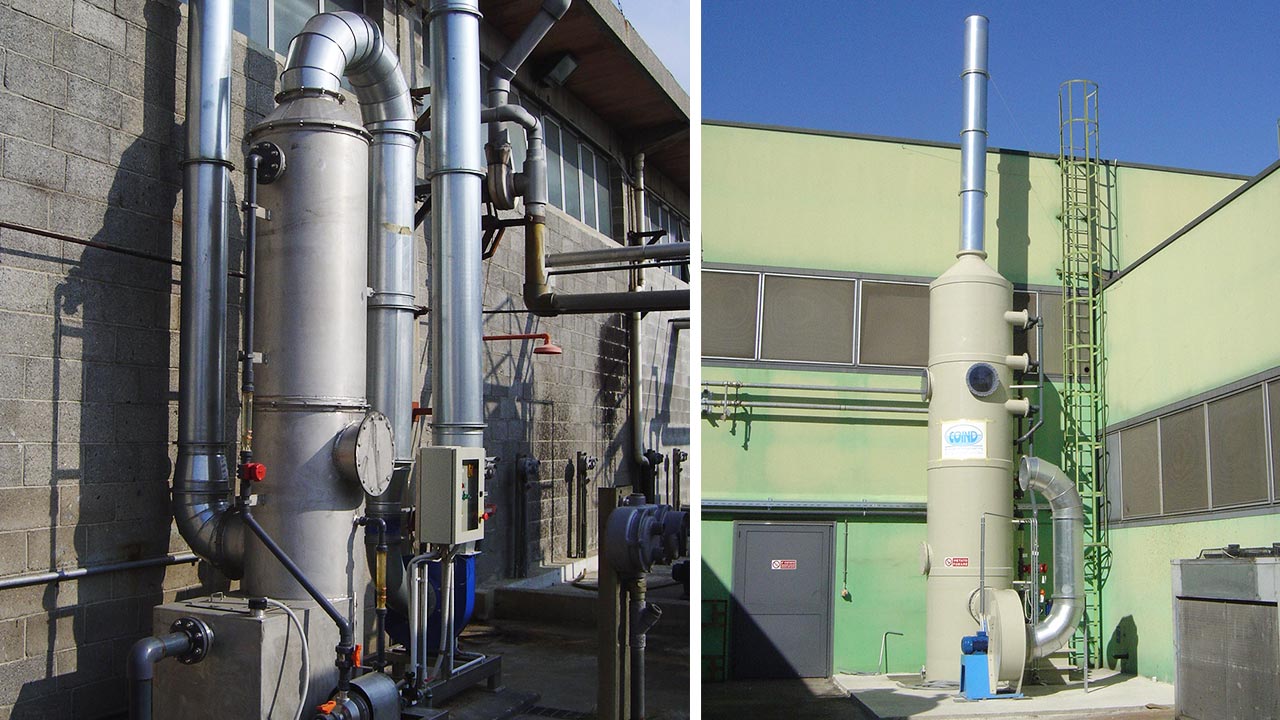
Emissions created as a result of processing can be dense with volatile organic or inorganic compounds and particulate matter.
To break down these substances, action is taken using wet treatments, where wash water, which can be fortified with chemical reagents suitable for the specific application, comes into action in the contact phase with the air stream to purify it of pollution particles.
In Washing Towers, with static-type filling, the abatement fluids travel countercurrently along the path of the air flow. The latter, sucked upward into the Tower, passes through filling beds and at the same time is evenly affected by the scrubbing fluid. At this stage, the chemical reaction takes place that realizes the neutralization of substances. The water capture capacity is limited, so a purge will need to be scheduled from time to time to maintain the appropriate level of effectiveness.
The polluted elements are released on the absorbent material and the liquid, transported in a closed circuit, ensures the continuous functionality of the system.

The parameters that influence the efficiency of wash towers are:
- Solubility of vapors in water with/without chemical additives
- gas current velocity
- air/water contact time
- liquid flow rate
- exchange bed
- bed height
The types of Washing Towers
Coind Wash Towers, made of thermoplastic material or stainless steel, can include a special filter to remove any remaining suspended droplets of solution and ensure that theair is purified most thoroughly.
Statically filled
One or more planes of fill beds, allow pollutants to be retained, statically. To remove dust in the air stream, it is often preceded by a Venturi Scrubber.
Floating bed
This type of system is useful for breaking down particulate matter, as it includes light spheres, agitated by air flow, which in addition to removing substances have a holding function on the fill beds.
